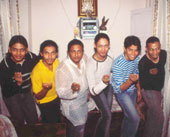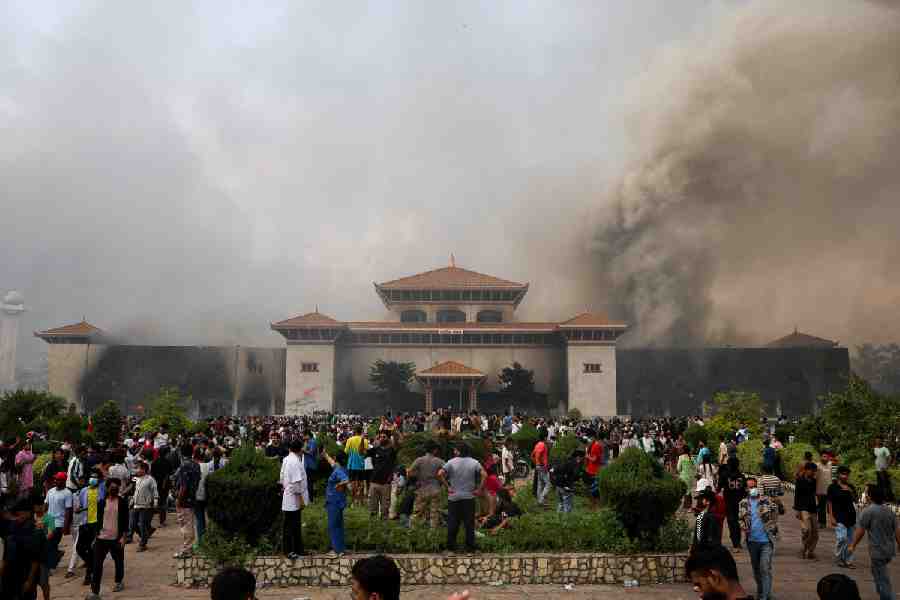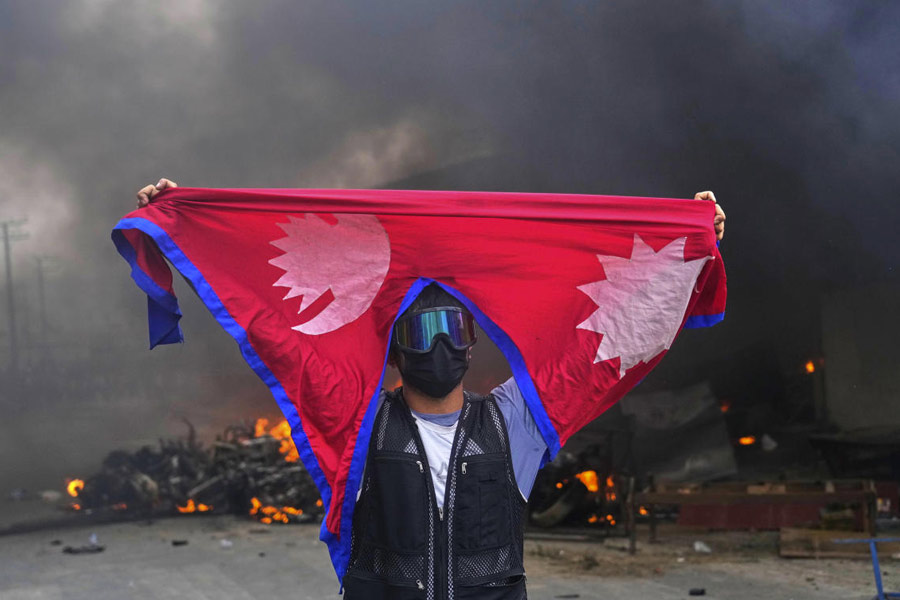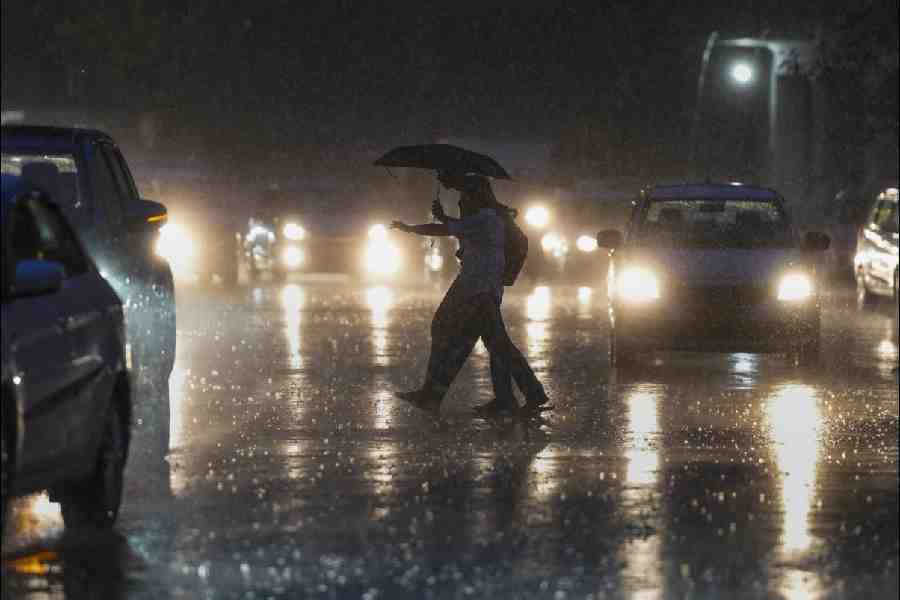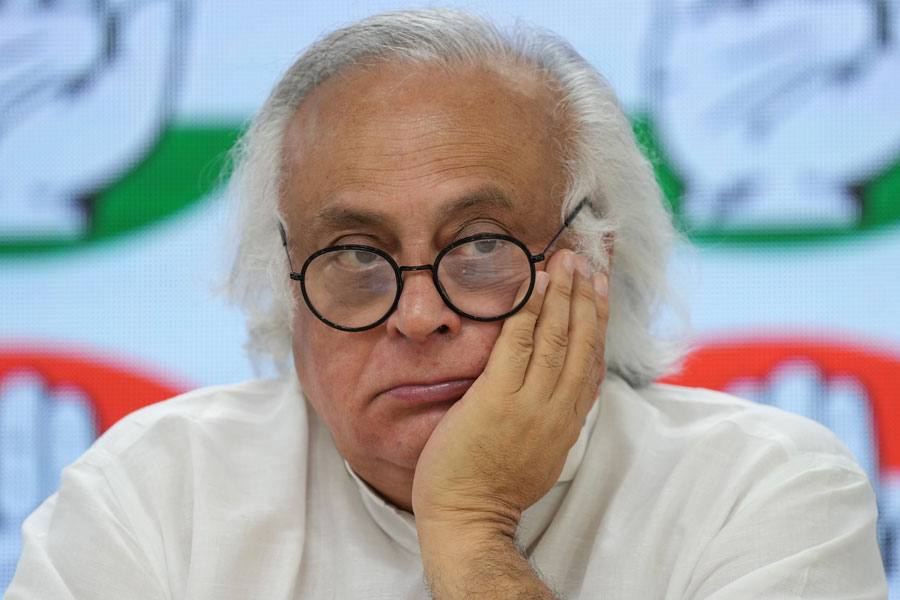 |
| Gender bender: Members of the Bin Baikancha Tamasha ( by Gajanan Dudhalkar); a photo from the group?s album |
The artistes take their nine-yard saris, and drape them deftly around and between the legs. They place elaborate wigs over their ponytailed hair. Their eyes are kohl-rimmed, their lips prettily shaded. They put their necklaces on, add dangling jhumkas to their ears, rings on the fingers and bells on their toes.
The troupe of Bin Baikancha Tamasha ? Tamasha Without Women ? is ready. All men, as the name underlines, the artistes move on to the stage, singing and dancing like women. The men in the audience leer and whistle. And quite a few of the Peeping Toms have to be shooed away when the artistes rush to the greenroom to change their costume for another act.
The first all-male tamasha troupe has been drawing huge crowds. Sixty-three shows old, the two-and-a-half-hour programme of dance and live music is based on the Maharashtrian traditional folk dance form of tamasha. The show?s USP is that men dressed up as women perform a medley of 28 lavani songs during the programme. Even the songs are sung live by male singers in a female voice. And, clearly, this is one place where the absence of women is hardly felt.
?It is very challenging. We strictly follow what our trainer told us: once you wear a sari, you transform into a woman,? says 32-year-old Anil Hankare who was the first to make up the team of dancers two years ago. ?If anything in our behaviour shows a hint of manliness, we will consider we have failed as artistes,? he says.
It?s such a draw that people have been flocking to the Bin Baikancha Tamasha ? eager to experience the unique concept of men impersonating women ? even though there are currently half a dozen tamasha-based shows performed by women.
Bin Baikancha Tamasha is the brainchild of Anil Vasudevan, a trained Bharat Natyam dancer who once worked as a telephone operator for the textile company, Mafatlals. In his free time, Vasudevan taught Bharat Natyam and coached teams from schools and colleges taking part in dance competitions.
Vasudevan thought of an all-male dance troupe for a tamasha-based programme when some of his students began performing in women?s tamashas. ?They would pitch in when a dancer didn?t turn up. The audiences could not tell the difference and they were applauded by the crowd,? says Vasudevan. ?So I thought it would be interesting to create an all-male dance troupe,? says Vasudevan, chatting with his lead performers in his one-bedroom flat in Worli.
It wasn?t easy putting together such a group. Vasudevan had to first conduct photo-sessions with men in nine-yard saris to see if they had the right feminine features. They also had to have a liking for dance. ?It was also important that they were comfortable with the idea of playing a woman. To be convincing as a woman, you have to think about yourself as a woman,? says Vasudevan, who took up his passion for dance full-time after Mafatlals closed down four years ago.
Vasudevan then conducted a six-month workshop training the group in the finer aspects of classical dance. He worked on gestures, body and eye movements and dance adas. ?We also had to design thigh and chest pads for each of the main dancers to get them into the right feminine shape. The boys have worked very hard on every aspect,? he says.
The lead dancers of Bin Baikancha Tamasha have had to get comfortable wearing nine-yard saris and then sing and dance wearing heavy jewellery and pinned-up wigs. And since the artistes need to change their saris for every new dance, they have also learnt to weave their way in and out of the traditionally worn sari.
?We have to learn how to undress and change into another nine-yard sari within barely five minutes, while backstage co-ordinators such as Ganesh ensure that every pin remains in place. It?s hard work backstage,? says 33-year-old Santosh Kadam, who lugs a haversack full of saris, make-up kits, jewellery and anklets all the way from Vasai, Mumbai?s farthest suburb, 60 kms away.
The dancers come from various parts of Mumbai and belong to different communities. Imran Sayed, or Sam, is 23, and the only Muslim in the group. Sayed began dancing with the ballet troupe of choreographer Girish Pardesi. ?My family was comfortable with my dancing career. So, when I decided to join Bin Baikancha Tamasha, they were okay with it,? says Sayed, who heard about the troupe from friend Nitesh Jadhav.
In a country where gender roles are otherwise clearly outlined, the troupe members have met with surprising encouragement for their chosen vocation. The Andheri-based family of 21-year-old Nitesh Jadhav, too, has been largely supportive of his decision to earn a living in a male tamasha. ?I started dancing when I was 17, in Girish Pardesi?s troupe. I have been performing with other women dancers since then. So, when this assignment came up, my family had no objections,? says Jadhav. Now, says Jadhav, his mother chooses his saris for him, and his father often lugs his luggage around for a show.
The group has seemingly come to terms with the roles that they play. When 24-year-old Vikram Singh, another troupe member, received a marriage proposal from his home state of Punjab, he found that he didn?t have a suitable photograph to send his would-be bride. ?The funniest part is that all I had was a photograph taken during my photo session. I sent that and my wife didn?t hesitate to say yes,? says Singh, who performs some of the most popular lavani compositions, such as Solawa Waris Dhokyacha.
Not everybody has had it this easy, though. Kadam?s father and brothers, for instance, strongly objected to his joining a tamasha troupe and performing as a woman. ?We are no longer on talking terms. But, my mother has been very supportive. She told me that I should do it if I like it. It is an art,? says the ponytailed Kadam.
There is, among the artistes, the discipline needed to perfect an act of a near gender cross-over. Most of the lead dancers maintain a ponytail, to help them with their wigs. ?We need to keep our hair long to ensure that the wigs we wear remain in place during the latkas and jhatkas,? says Kishor Shiraswar, the youngest of the troupe at 20.
Members of the group perform various kinds of lavanis ? baithakichi lavani (seated), khadi lavani (standing), shringarik lavani (erotica) ? which have different dance combinations. Bin Baikancha Tamasha has two male singers who render songs in a female voice. For instance, 42-year-old Vinay Koli has been specialising in this form of singing for nearly two decades. A painter?s son, Koli was attracted to singing in a female voice when he heard singer Mahesh Kumar do a falsetto at a local cultural programme.
I used to sing at local functions in a male voice. One day, I was to sing a duet with a female singer, and she didn?t turn up. I just tried singing the song in a female voice and everybody applauded. I took it up then,? says Koli, who renders more than 14 lavanis in a single programme.
The troupe has been doing one-off shows in Mumbai, and has been travelling to other cities such as Pune, Nasik , Kolhapur, Satara and Latur on invitation. With financial help from Pune-based businessman Bhalchandra Kharshikar, the troupe has plans to take the show abroad.
?We have to vary our style of performance according to the audience presence. In cities, we get an audience that behaves itself. In rural areas, we have to make the show more interactive, throw bold glances at the audience, and make it more rustic,? says Hankare, adding that his eight-year-old daughter and seven-year-old son enjoy watching their father?s performance.
Hankare performs what he calls the highlight of the show. The lavani Potasathi Nachte (I dance for a living) is different in character from the other 27 songs. ?My rendition moves people to tears. They even forget to clap. That?s also my biggest applause. It portrays the dilemma of folk artistes who devote their life to keep a form alive though they can barely make a living on it,? says Hankare.
That?s also the story of the troupe.

